
B.C. Supreme Court rules logging company can’t claim financial losses due to conservation
Forestry giant Teal sued for $75 million in compensation after old-growth trees on Haida Gwaii...
Get the inside scoop on The Narwhal’s environment and climate reporting by signing up for our free newsletter.
One of the seven calls to action from Canadian Journalists of Colour and Canadian Association of Black Journalists calls for mentorship opportunities for aspiring journalists of colour. The Narwhal offers paid fellowships for photographers who are Black, Indigenous or people of colour. Ebunoluwa Akinbo is one of the 2024 fellows.
There’s a saying in Nigerian Pidgin: “na mumu dey go boutique.” It translates roughly to “It is only a fool that goes to the boutique,” Ebunoluwa Akinbo says, laughing as she perches on the arm of a couch in her south Winnipeg apartment.
The armchair to her right is piled high with an eclectic assortment of fabrics: a polyester pantsuit, a sequined minidress, ripped jeans, a windbreaker, long sheer curtains, a straw hat, a thick patterned scarf, faux snakeskin boots. Each garment still bears a paper price tag from one of Winnipeg’s myriad thrift stores.
The Nigerian-born photographer’s living room has recently doubled as a makeshift portrait studio, where she has been wearing multiple hats (literally and figuratively) as photographer, stylist, artistic director and model.
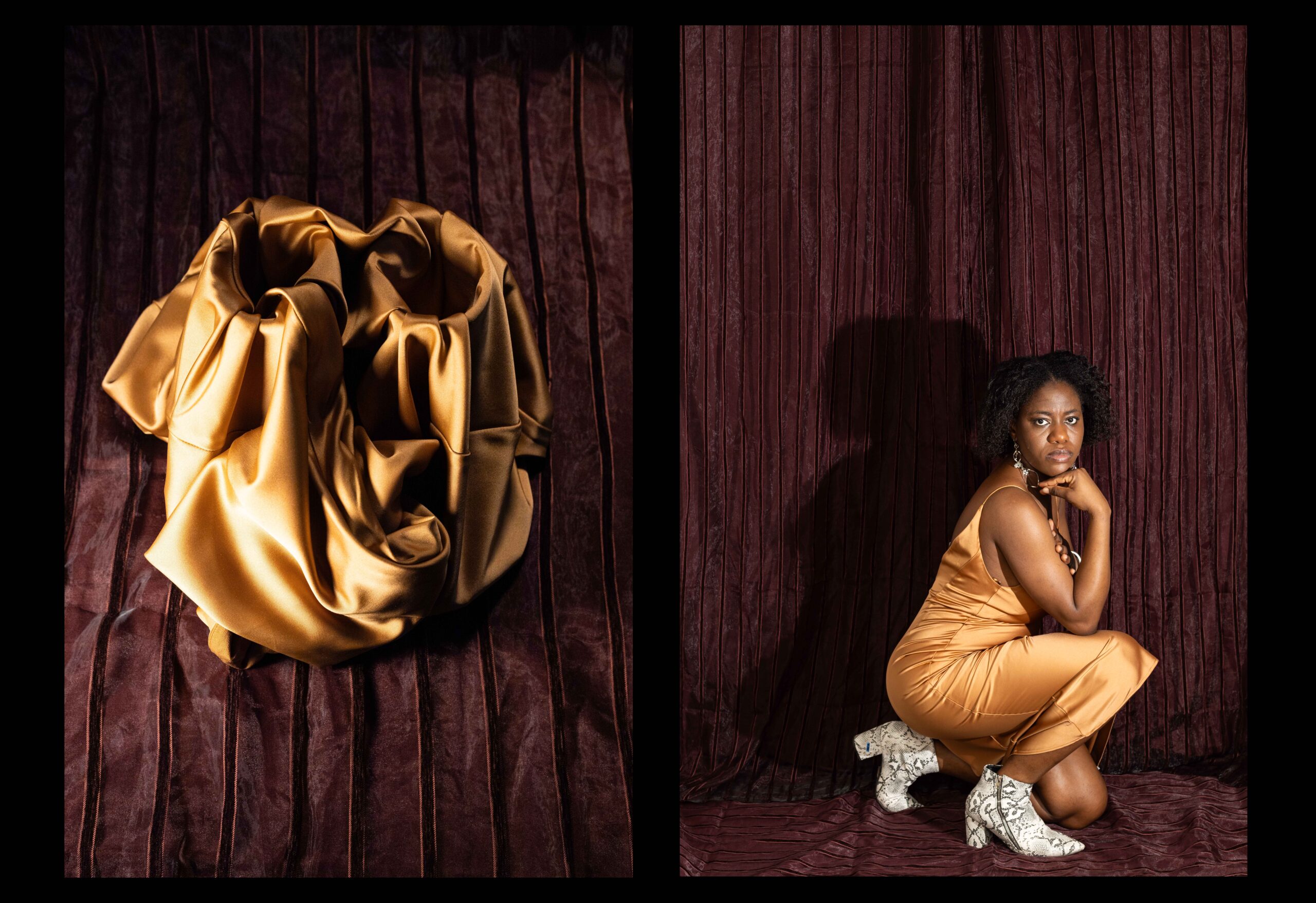
Through self-portraits, still life and documentary photography, Akinbo has spent months exploring a familiar yet mystifying phenomenon: the rising popularity of thrifted clothes.
“There’s a big deal about thrifting here,” she says. “It’s a culture or a way of life. It’s a community on its own.”
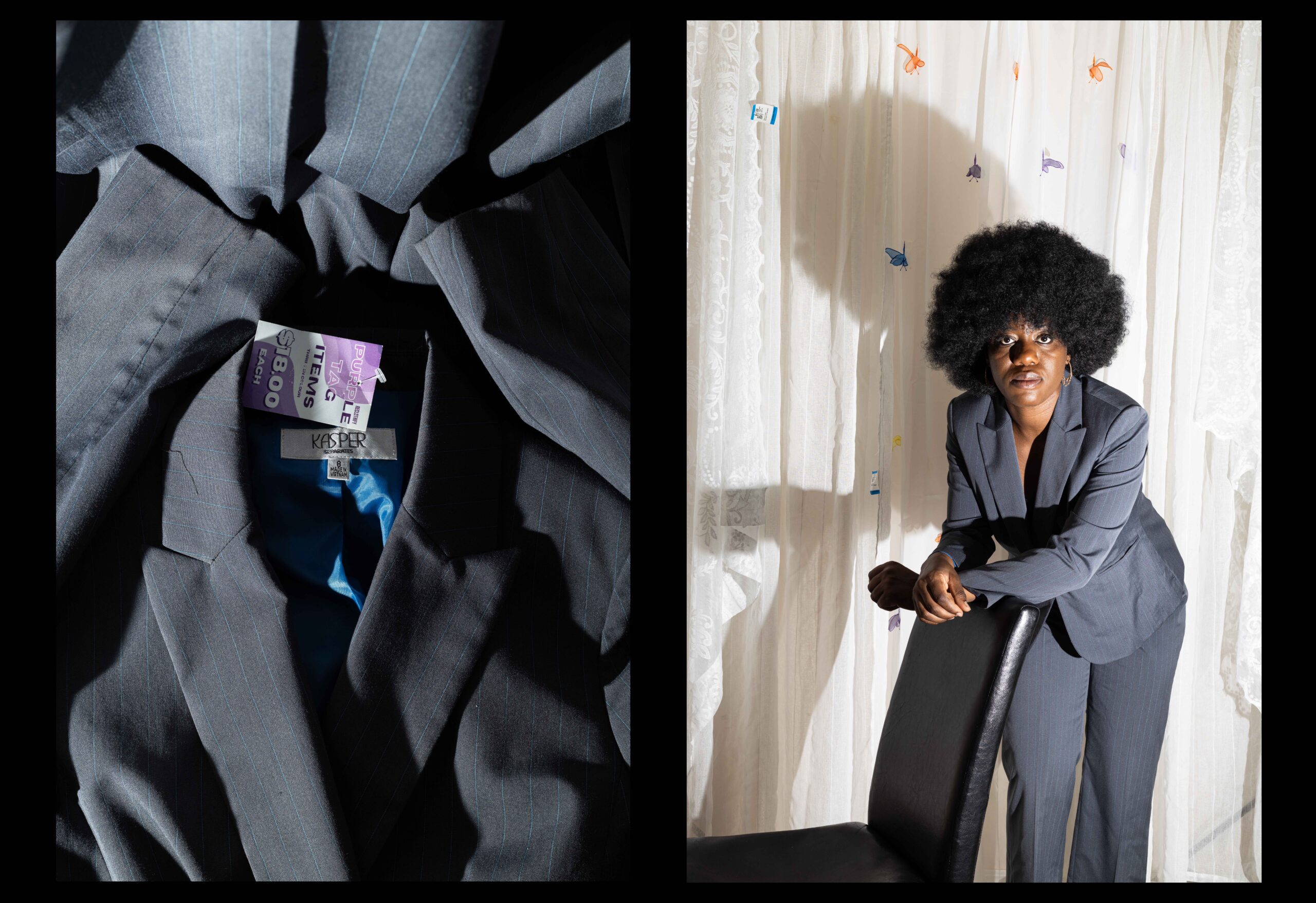
Her search to better understand Winnipeg’s love of the second-hand hunt led her from overflowing thrift store racks to the organized chaos of a sorting warehouse and into her own memories of Nigeria’s bustling okrika (Pidgin for second-hand clothing) markets. She spoke to shoppers, second-hand-store owners and staff who make the all-important decisions about what goes on the shelf.
Along the way, Akinbo says she’s come to think a little differently about clothing — what it’s made of, how it travels and what it says about who we are and where we come from.
“Thrifting is all about travelling, it’s about migration,” she says. “It’s interesting to see all of the little identities of the city are present in the thrift store.”
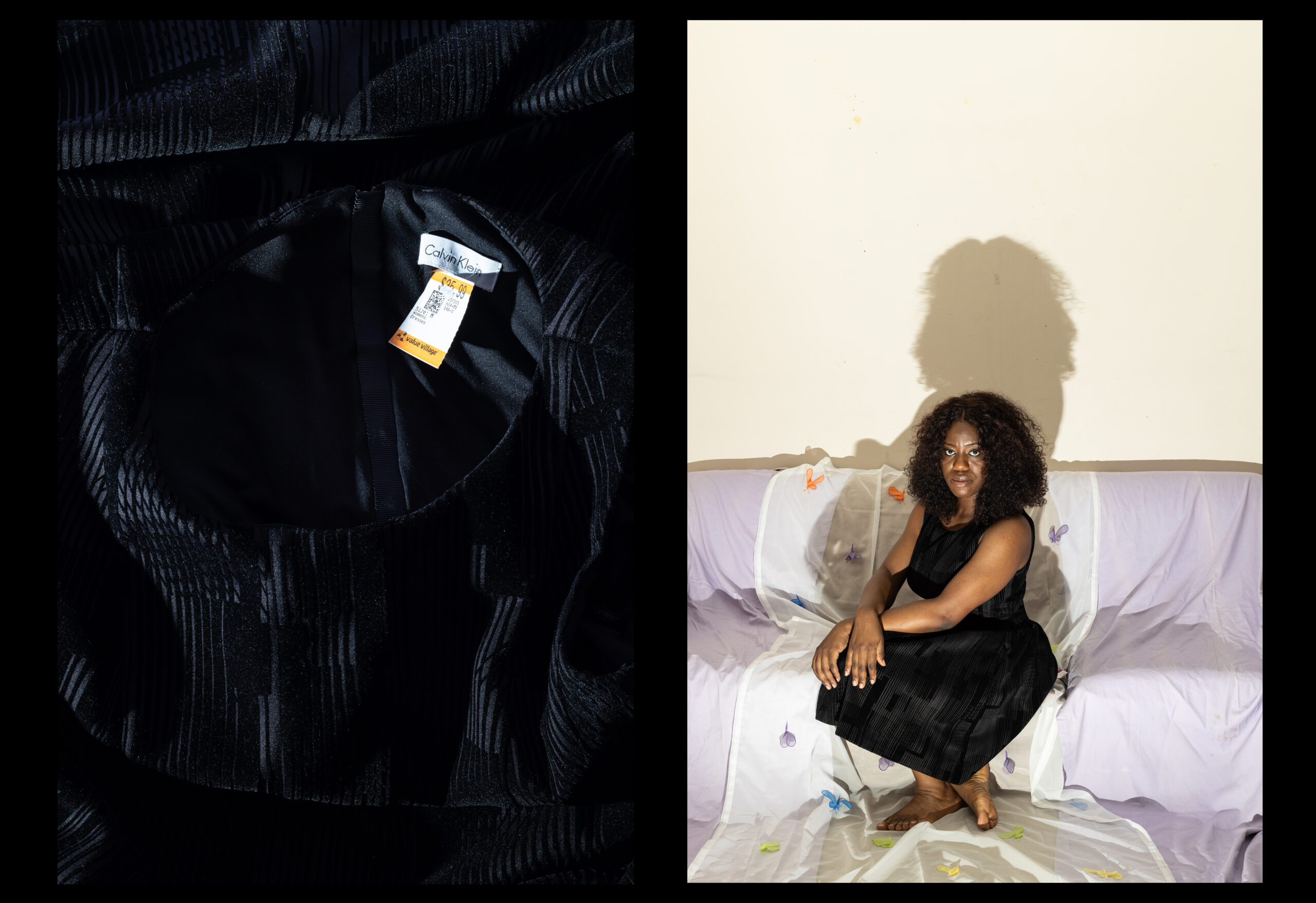
When Akinbo arrived in Winnipeg during the frigid winter of 2021 to start an arts degree at the University of Manitoba, her first stop was the thrift store.
The coat her mother had found for her at a second-hand market in their hometown of Lagos couldn’t handle Manitoba’s winter extremes, so Akinbo’s then-roommate took her to find a replacement.
“Let’s go to Value Village because that’s where you’re going to get good stuff,” Akinbo remembers her roommate saying.
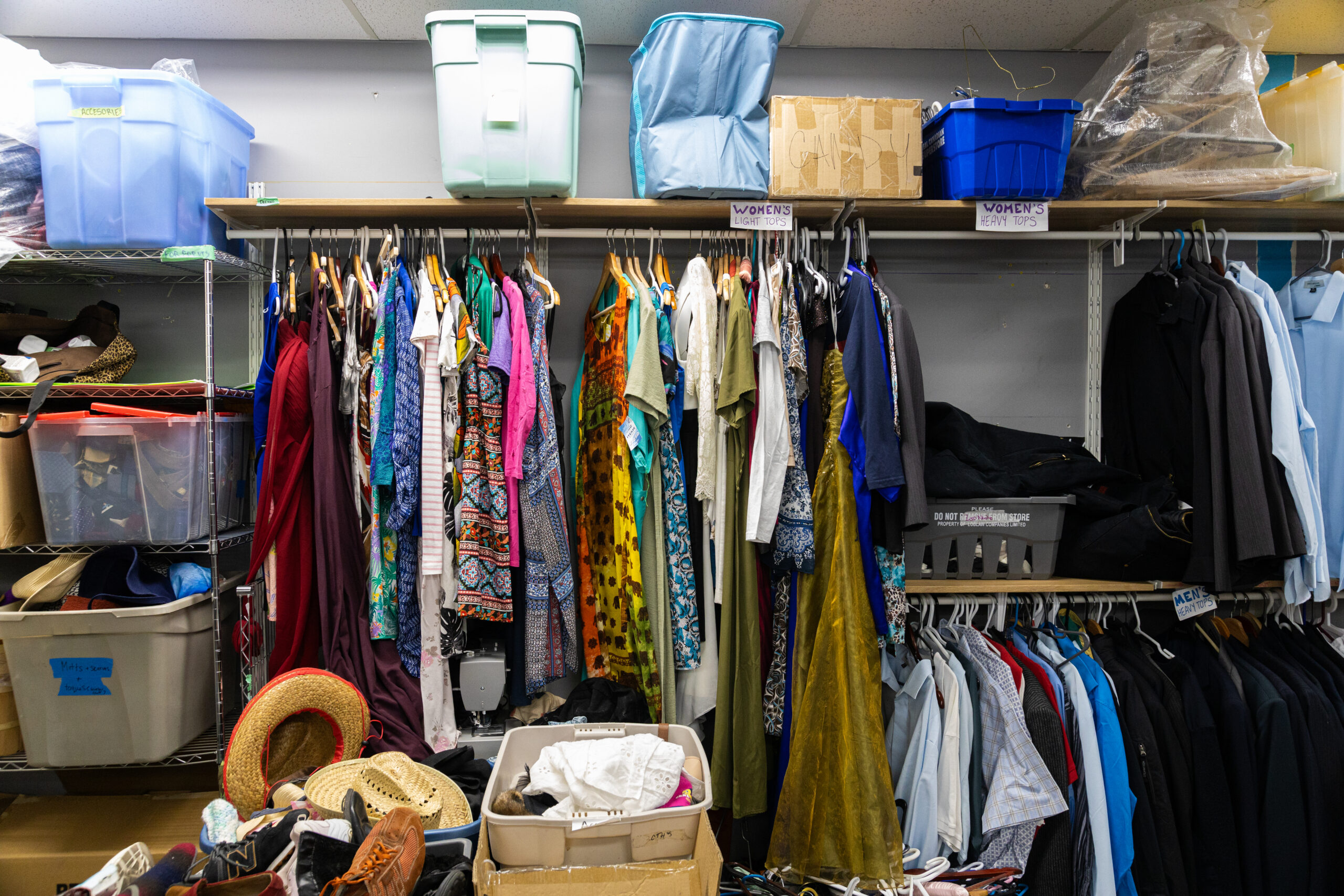
The bright maze of neatly arranged shoes, books, housewares and clothing draped on seemingly endless rows of hangers in the south Winnipeg store was revelatory, Akinbo recalls. And she did find a good deal on a jacket, she says proudly.
“Back home, thrifting is in a night market and the clothes are actually on the floor,” Akinbo says, miming the stooping and sifting of “bend-down-select” — Nigerian slang for thrifting.
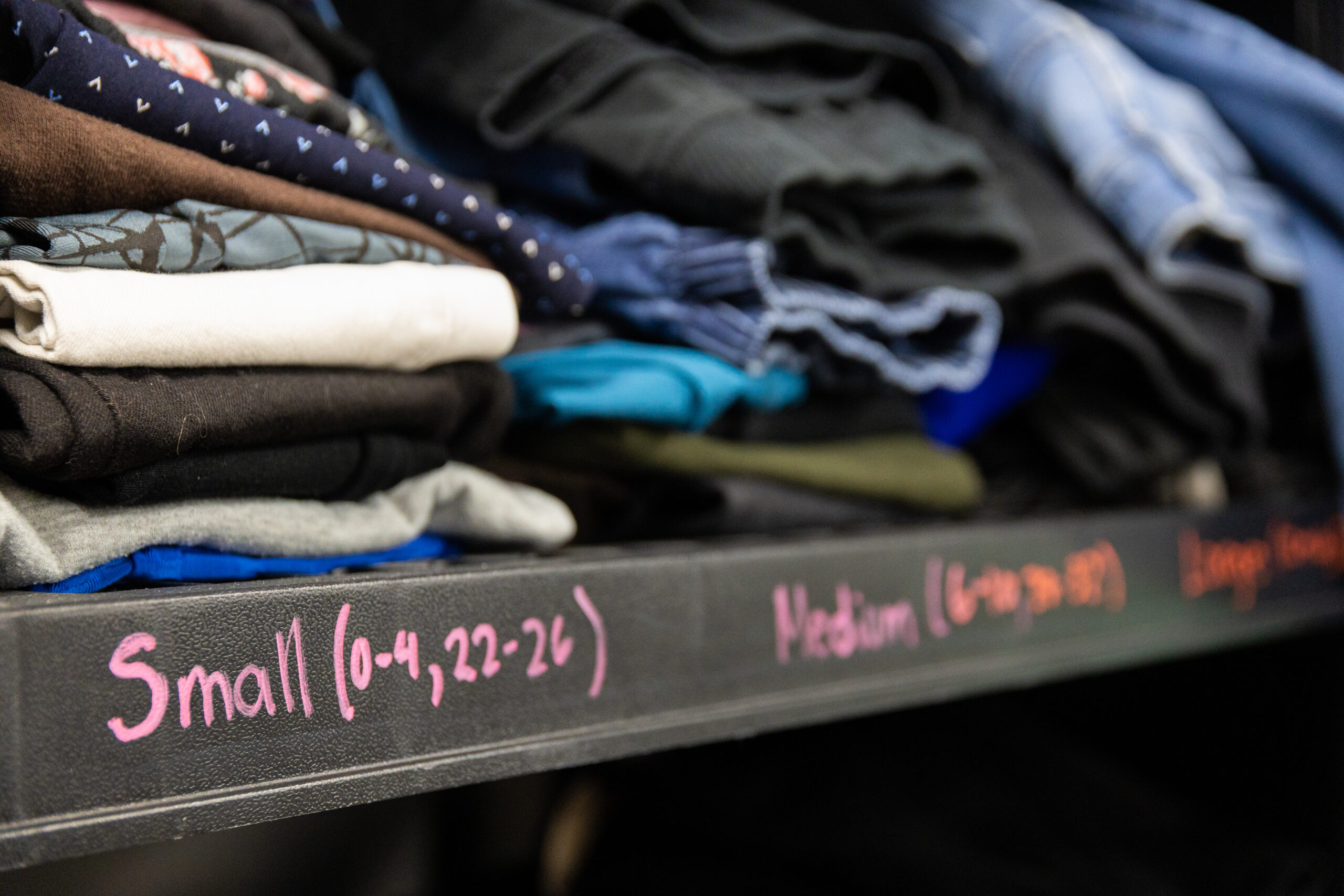

Yaba, a Lagos suburb, is something of a second-hand shopping hub. Vendors pack into Tejuosho, the city’s largest outdoor market, with bags of used clothing, organized by quality and spread out across the ground for shoppers to pick through.
In Nigeria as in Canada, a bend-down-select is frequented by students, lower-income and middle-class families looking for affordable necessities or unique items, Akinbo says.
But unlike in Canada, where most thrift store wares come from local donations, the garments sold in Nigeria are largely imported by the bale from Europe, Asia and North America.
The donation-based system in Canada transforms the thrift shop into a kind of archive, Akinbo says. As garments pass “from one place to another, from one household to another,” they form a picture of the city’s identity.
Eras of fashion history are preserved in the passed-down threads. Local sports team logos are emblazoned on jerseys, sweaters and t-shirts. Rows of parkas and heavy sweaters nod to the cold climate. The city’s fashion sensibilities — mostly simple styles and muted colours, Akinbo notes — are reflected throughout.
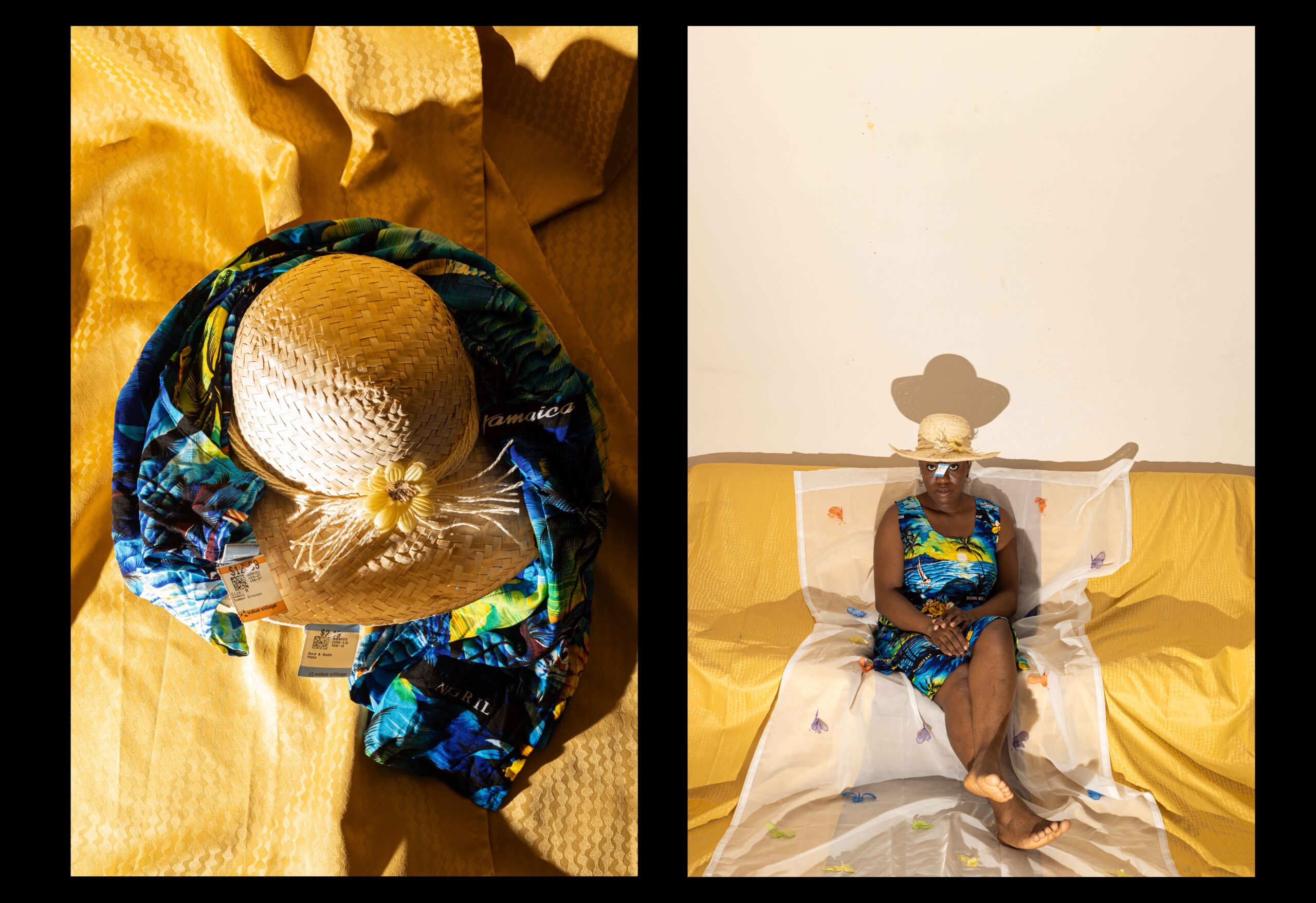
When Akinbo set out to capture the culture of Canadian thrifting through portraits, she wanted to merge that Winnipeg identity with elements of home.
Inspired by West African photographers of the late 20th century — Malian artists Seydou Keïta and Malick Sidibé, and Cameroonian-Nigerian photographer Samuel Fosso — she looked to emulate their characteristic hard lighting, dynamic posing, stark contrasts and bold, patterned fabric backdrops.
She searched the stores for clothing and backdrops that felt true to her own style. She found textured, sheer curtains that evoked memories of her grandmother’s beer parlour and a grey suit that would make her mother, a lawyer, proud.
“It’s like a fusion,” she says. “Bits of home, bits of Winnipeg.”
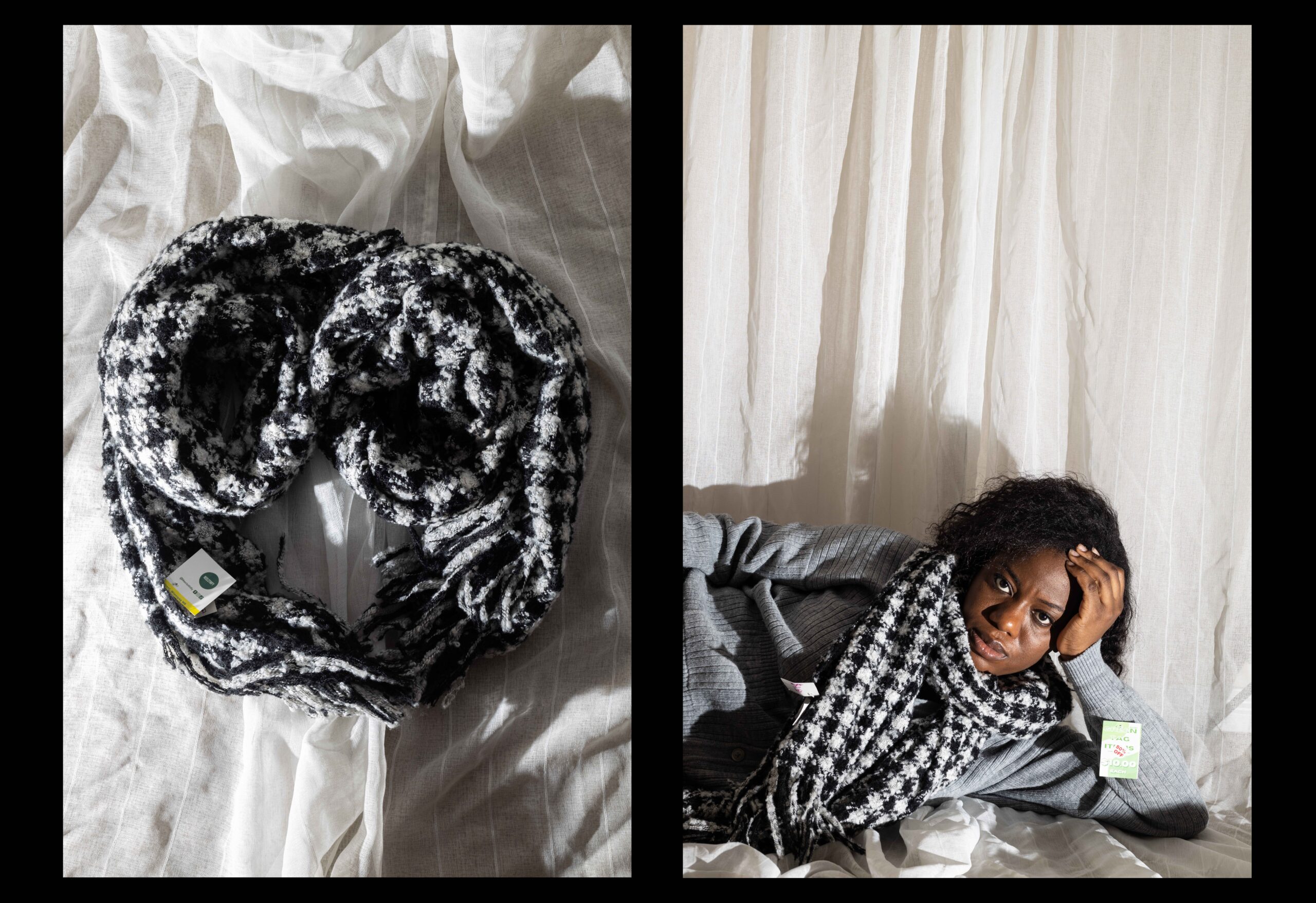
For Akinbo, the “culture of giving” fostered by these donations sets North American thrifting apart from the second-hand culture she’s used to.
Passing clothes down from one family member to the next is a common practice back home, Akinbo says, but she doesn’t know of any okrika vendors who accept donations.
“This is so different because it’s more sustainability driven, consciously or unconsciously,” she says.
As she roamed Winnipeg thrift stores speaking to shoppers and staff, many told her they were drawn by the discounts and the thrill of the hunt. Shoppers are proud to find unique items for a good deal, she says, and share tips on where to find the best-curated second-hand items.
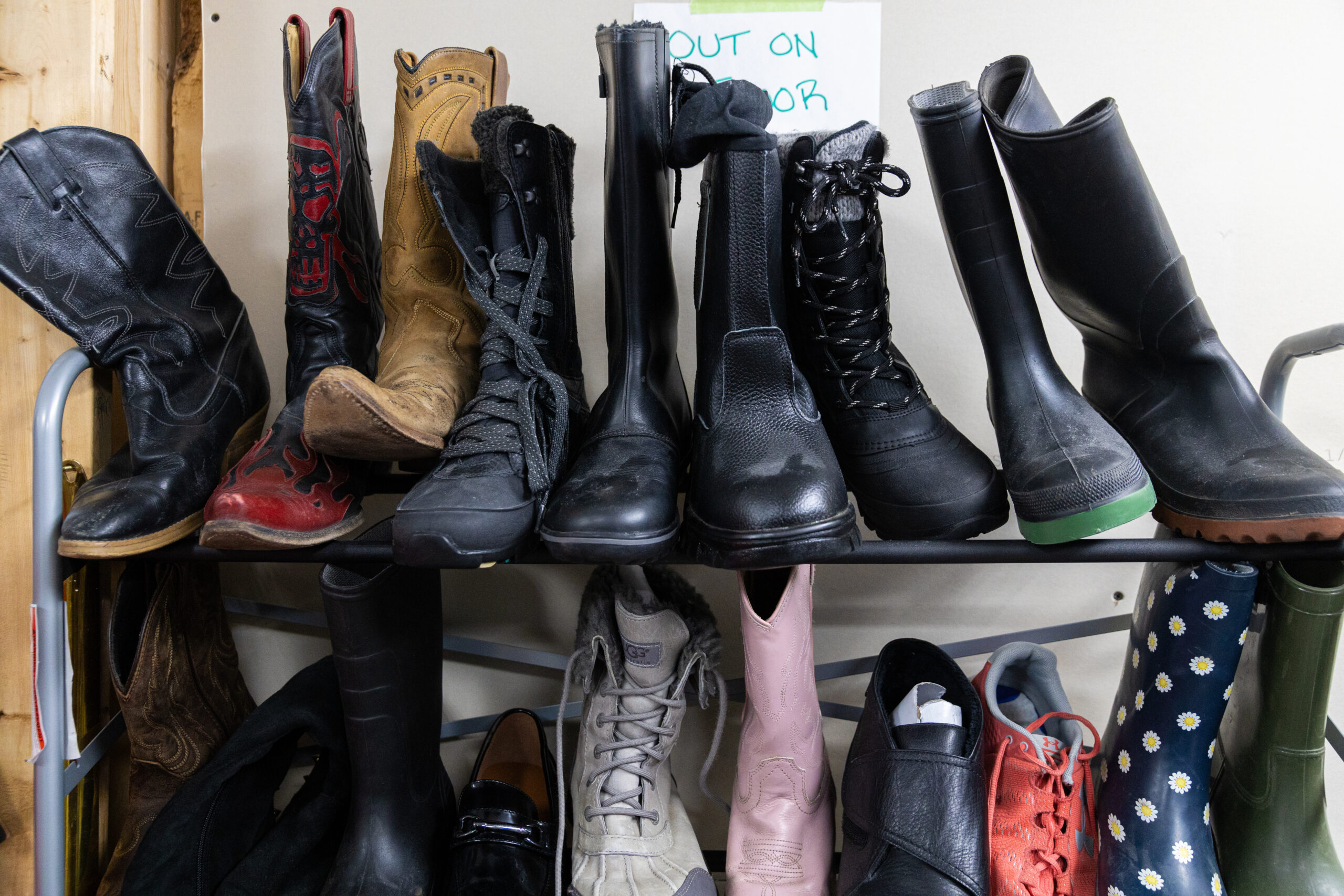
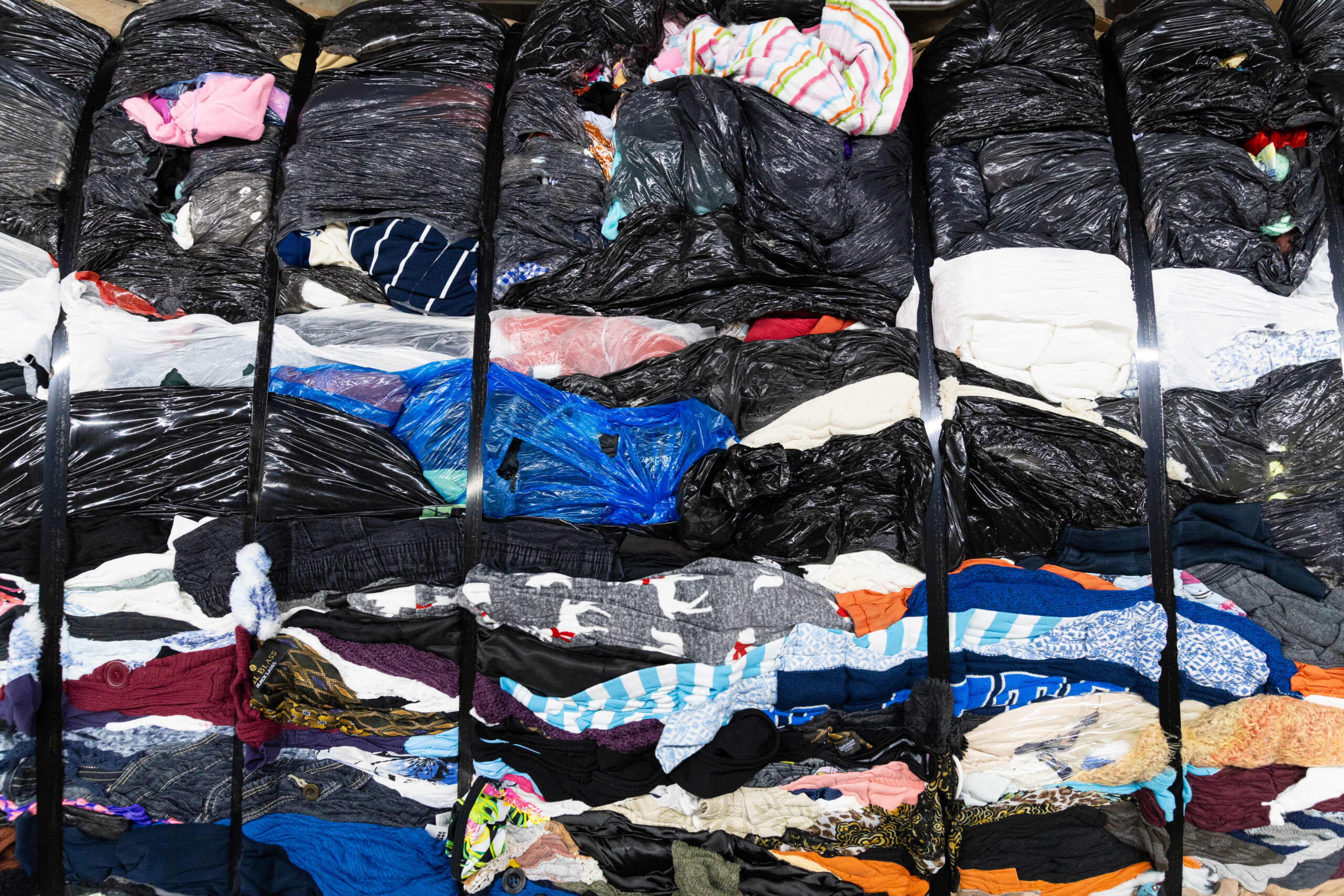
But while “the thrift store serves different purposes here outside of recycling and sustainability,” Akinbo says, “in all of these things there’s that silent but loud voice of Winnipeggers being sustainable.”

There’s data to back that up: market research by ThredUp, a digital thrift and consignment marketplace, found the top reason American shoppers turn to second-hand is to save money, with sustainability ranking as the fourth most important reason to thrift.
A 2022 survey commissioned by Savers, the for-profit company that owns Value Village, found one in two Canadian shoppers reported caring more about the environmental impact of their outfits than they did three years prior, and nearly three-quarters believed thrifting was better for the environment.
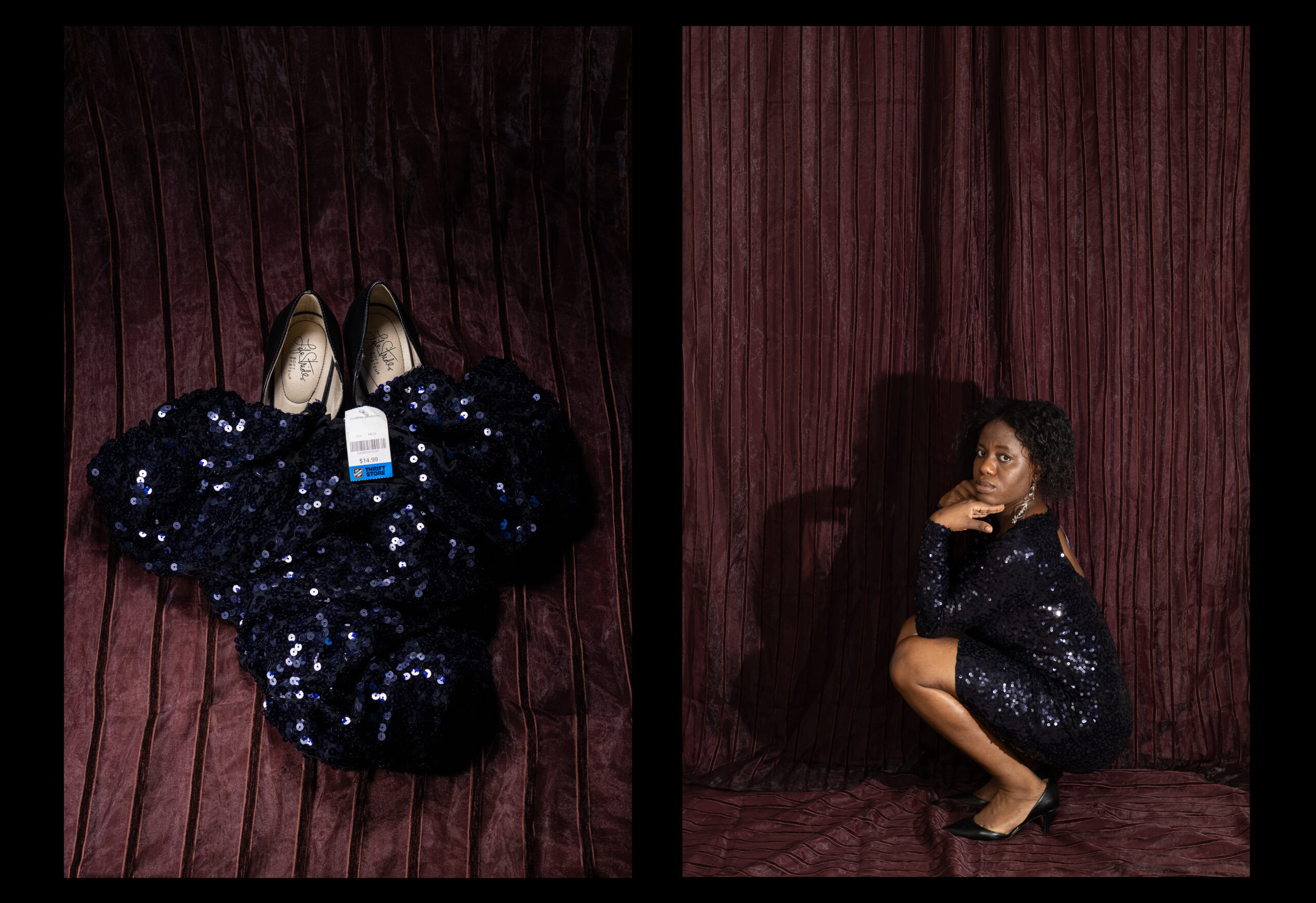
But not everything donated to the thrift store ends up on the shelves. Searching for herself among Winnipeg’s hand-me-downs made Akinbo curious about how curators decide what to sell — and where the rejects go.
“Whatever is not needed is moved away. Maybe it’s sold to another thrift store, maybe to somewhere in another country, so it’s still migrating,” she says.
In the back rooms of Canadian thrift stores like Value Village, employees sift through donated goods, marking about half of what they receive as saleable merchandise, according to a 2021 report from Fashion Takes Action, a Canadian fashion sustainability non-profit.
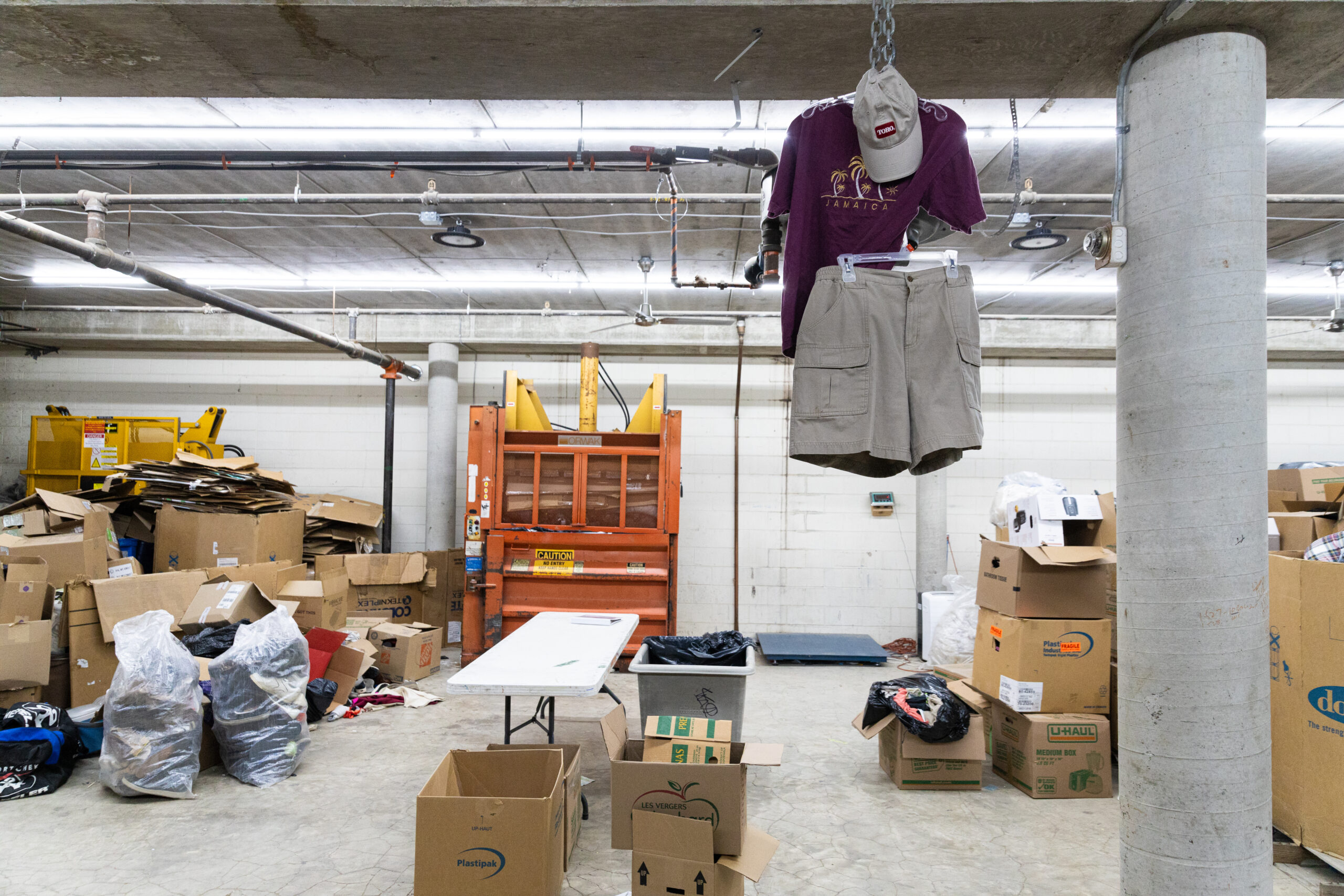
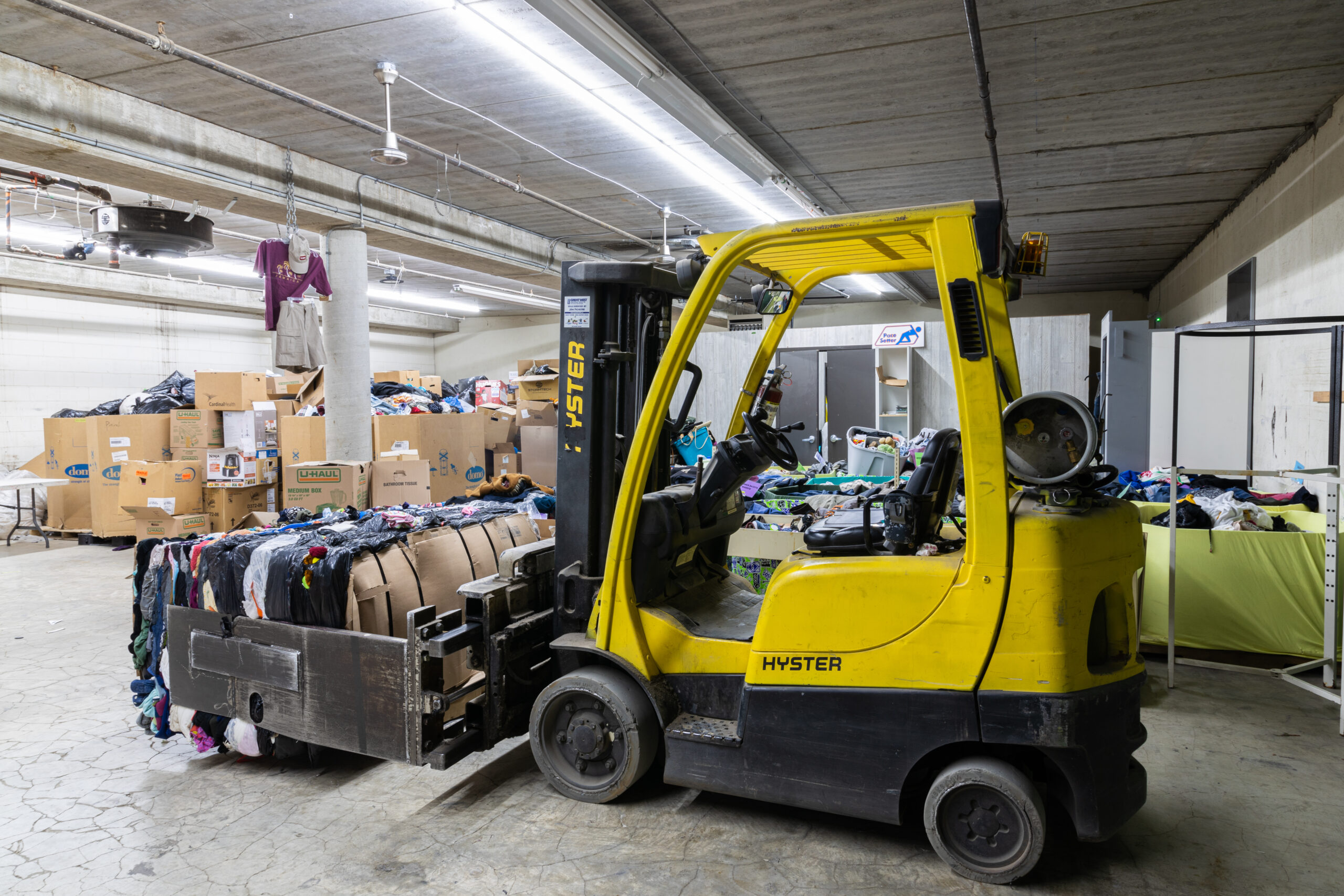
But the invisibility of Canada’s clothing waste is misleading. Canada doesn’t track its textile waste, as few cities have a separate waste stream for textiles, but Fashion Takes Action estimates the country generated approximately 480,576 tonnes — four times the weight of the CN tower — in 2018 alone. The Recycling Council of Ontario estimates the average Canadian sends 37 kilograms of clothing to the landfill every year.
The global scale of clothing waste is a much bigger problem.

Okrika sellers, for example, receive bales weighing up to half a tonne and stuffed with thousands of used items in an assortment of brands, styles and sizes. That makes the market an ideal place to find something unique and unconventional, Akinbo says, but also means there’s plenty that doesn’t sell — and ends up in the trash.
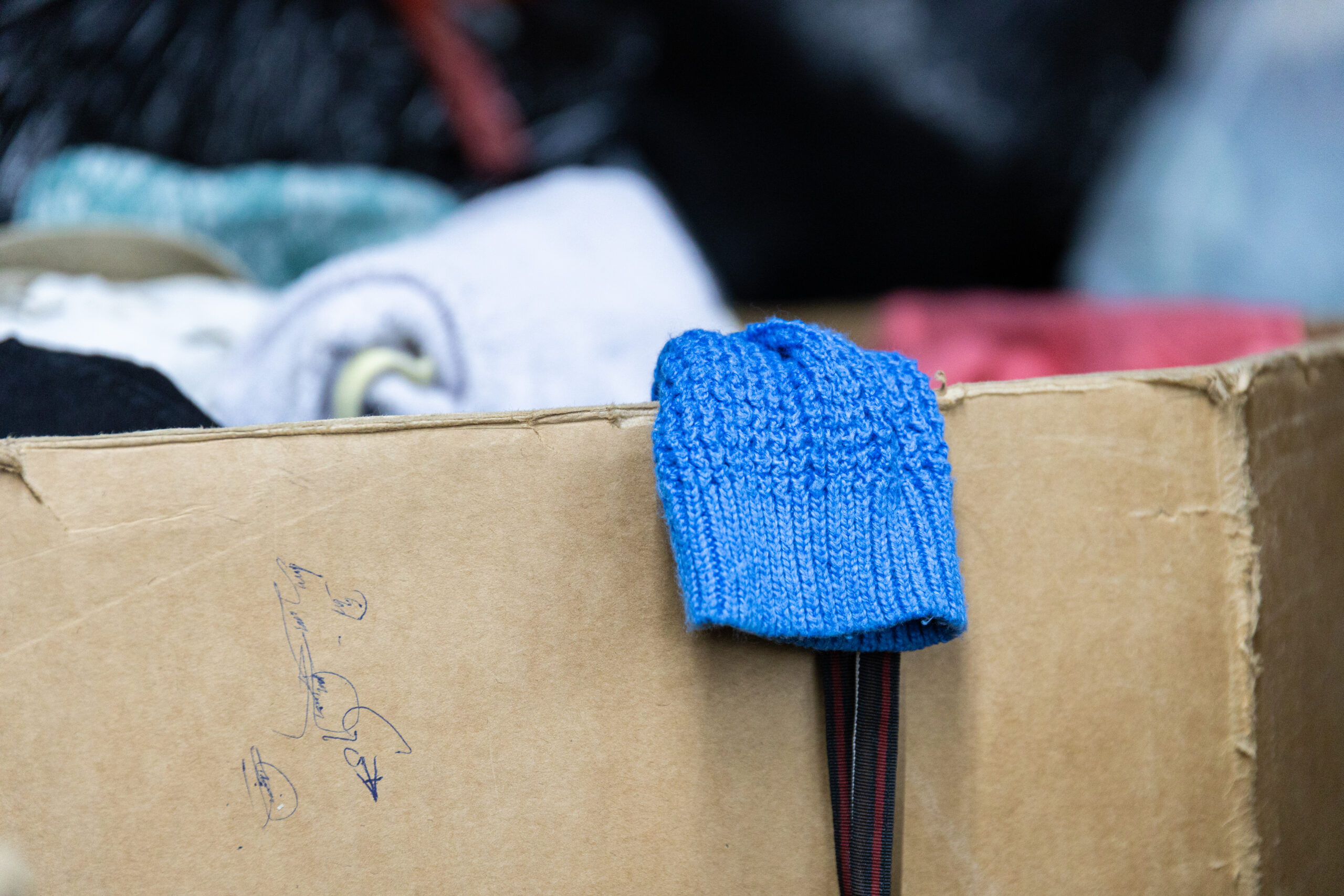
“At the end of the day, this clothing isn’t going anywhere after Nigeria, after Africa,” Akinbo says. “Africa becomes the final dump site for Western countries.” Last year, Nigeria Customs Service announced the government’s intent to ban the second-hand clothing trade, joining Uganda and other members of the East African Community trade bloc — including Burundi, Congo, Kenya, Rwanda, South Sudan and Tanzania — which have also been trying to stop the import of used clothing since 2016.
Non-profit Global Fashion Agenda pegged global clothing waste at 92 million tonnes in 2015, expected to increase approximately 60 per cent by 2030. In Canada, a private member’s bill that would develop a national strategy to reduce textile waste is currently stalled in Parliament. According to the bill, 500 million kilograms of Canadian textile waste end up in landfills every year — and more than three quarters could be reused or recycled.
At Reclothify, a Winnipeg thrift store focused on sustainability, Akinbo learned about a slightly different model from owner Alisha Murray.
The store doesn’t accept community donations, instead taking in bales from a handful of non-profit partners and companies with unused stock. While some items are sold as is, Reclothify also works with Manitoba brands that upcycle clothes into something new: a remade garment, accessories, artwork and more.
And unlike some traditional second-hand stores, Reclothify occasionally opens its sorting warehouse to the public for “thrift by the pound” days.
“When I hear somebody say ‘I want to throw this away,’ it almost hurts my heart now,” Murray says. “I do have hope that sustainable fashion is going to grow.”
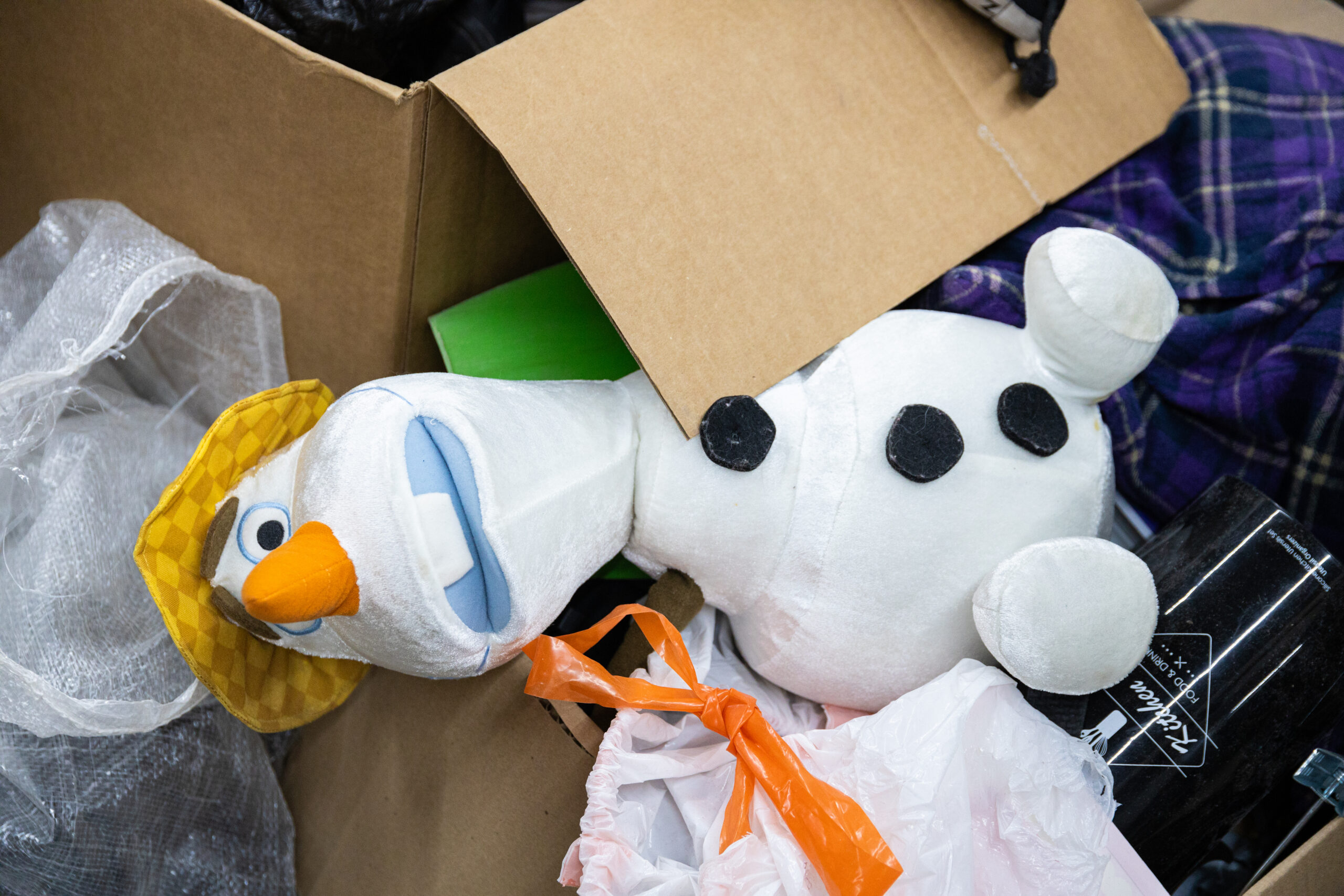
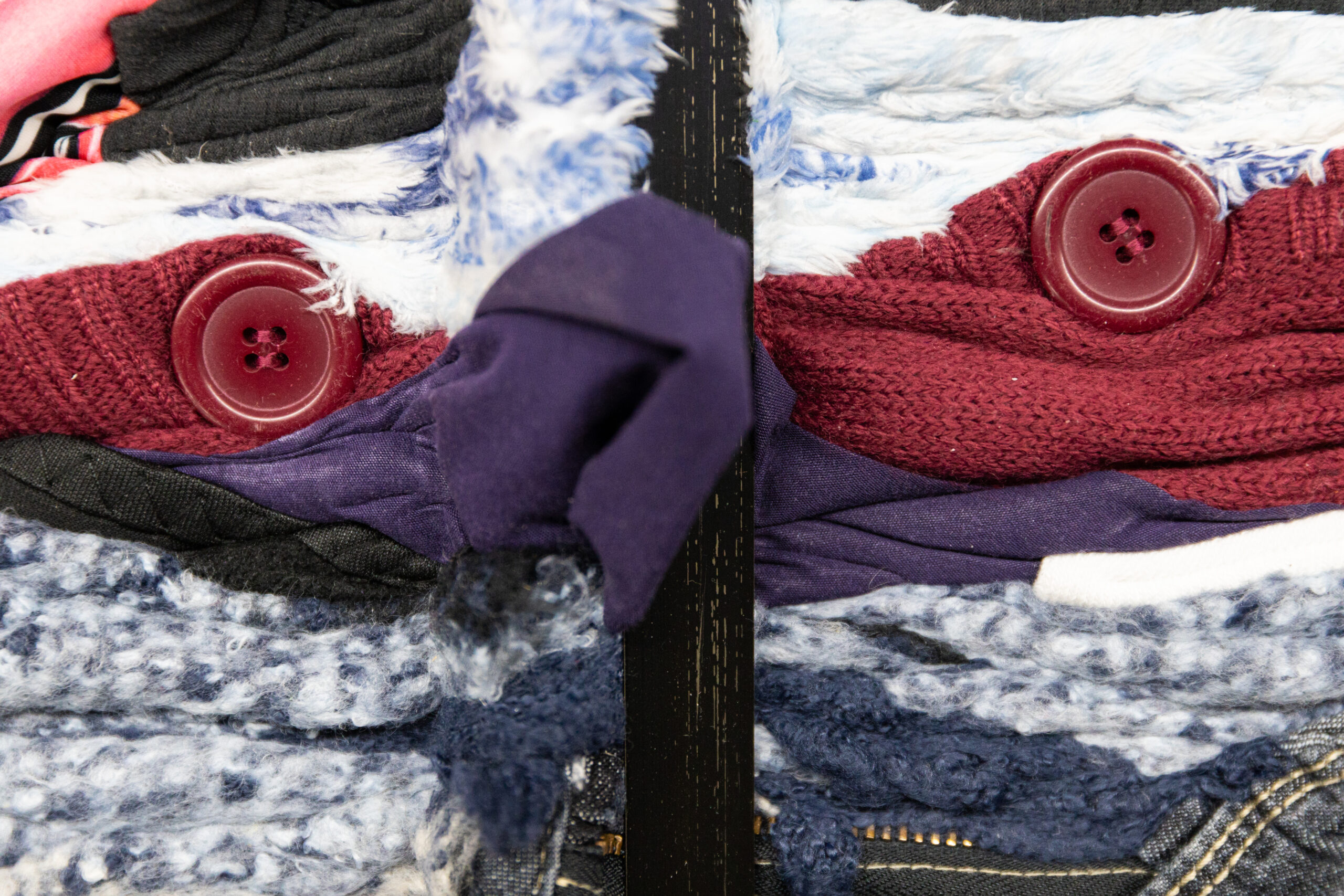
At the sprawling Reclothify warehouse, Akinbo watched as curators quickly and systematically sifted through teeming boxes for special, sellable pieces.
“These are the people that make the decision about what stays and what doesn’t stay. It’s super fast — you’re holding it up and throwing it here, throwing it there,” Akinbo says.
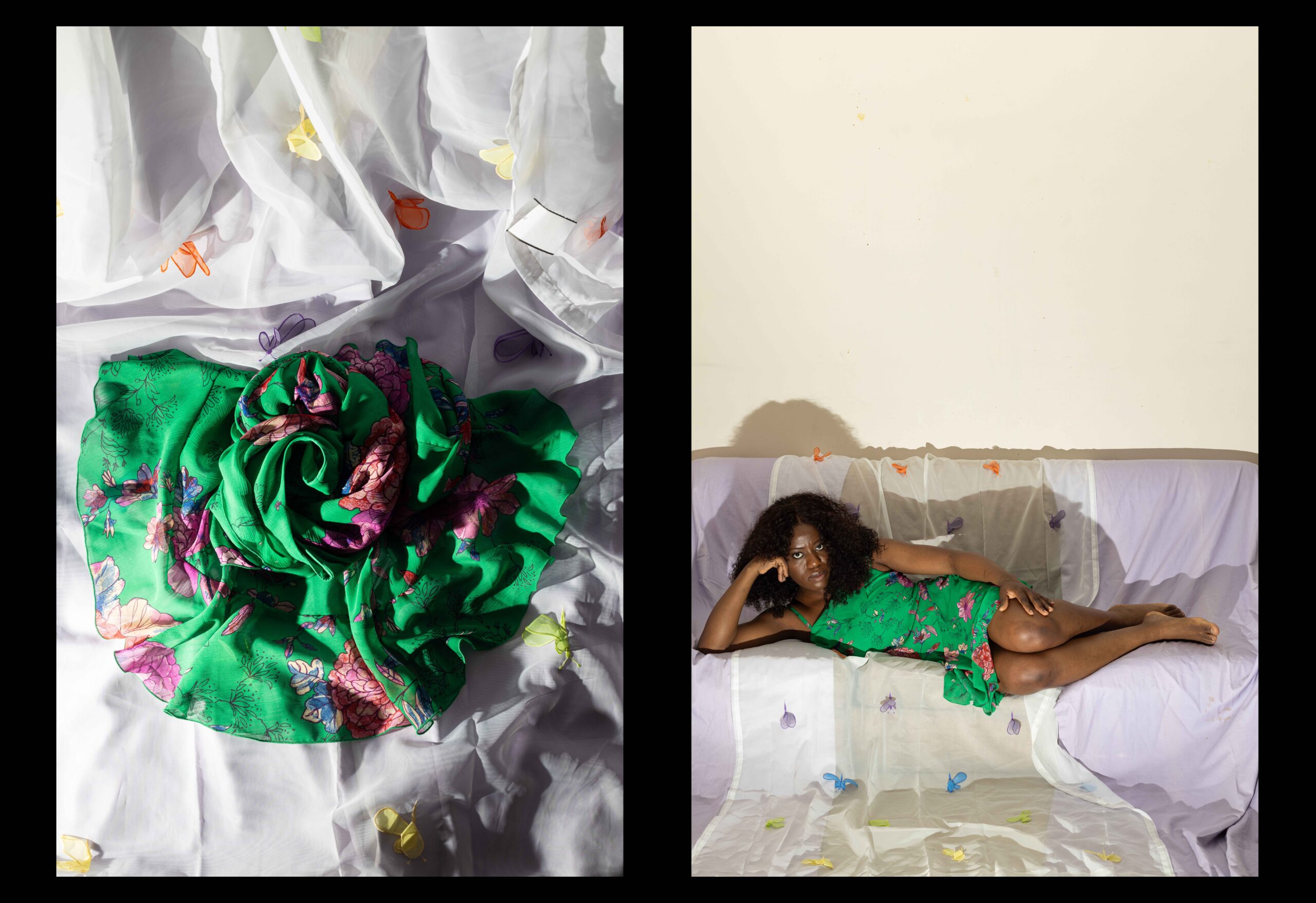
Murray says about two-thirds of what the store receives is sold. The rest is compacted into large bricks and sold to textile recyclers. Most recycling involves shredding or breaking down fabric for use in other applications — some absorbent fabrics can be turned into cleaning rags, some is respun into new yarn or used to make products like insulation.
Murray says she’s inspired by a rise in creative approaches to textile recycling. One French company, for example, has combined discarded denim and resin to make building materials like bricks. More homegrown textile recyclers use fabric scraps as stuffing for household items like bean-bag chairs.
“It’s a challenge that I take on everyday: how are we going to figure out what to do with those textiles that can’t be worn?” Murray says.
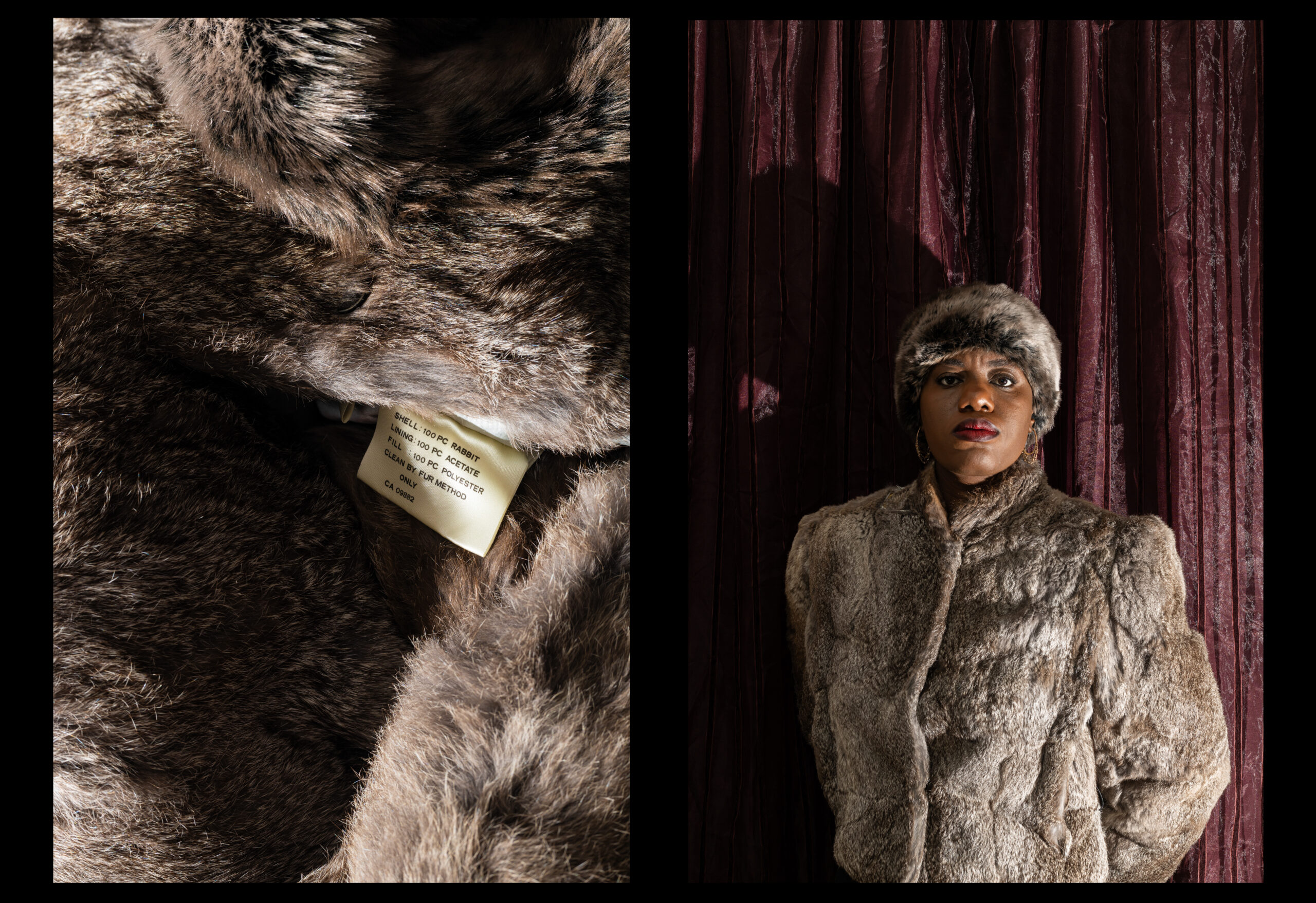
Now an expert on the scene, Akinbo has joined the legions of Winnipeg residents for whom thrifting is fun and fashionable, but also meaningful.
“I’ve become very conscious about where clothing is coming from, how fibres are made,” she says, reflecting on what she’s taken away from her months spent in and out of second-hand shops.
“And I’m proud to say: ‘I got this from a thrift store.’ ”
Ebunoluwa Akinbo is a Nigerian photographer living in Canada. She blends her background in sociology with her fine arts education to explore themes of memory, identity and migration in her work. Using photography as her primary medium, she communicates these themes through both figurative and abstract forms, while also engaging in traditional storytelling within photojournalism, documentary and conceptual photography. Akinbo has worked on commissioned and personal projects and has exhibited her work locally and internationally.

